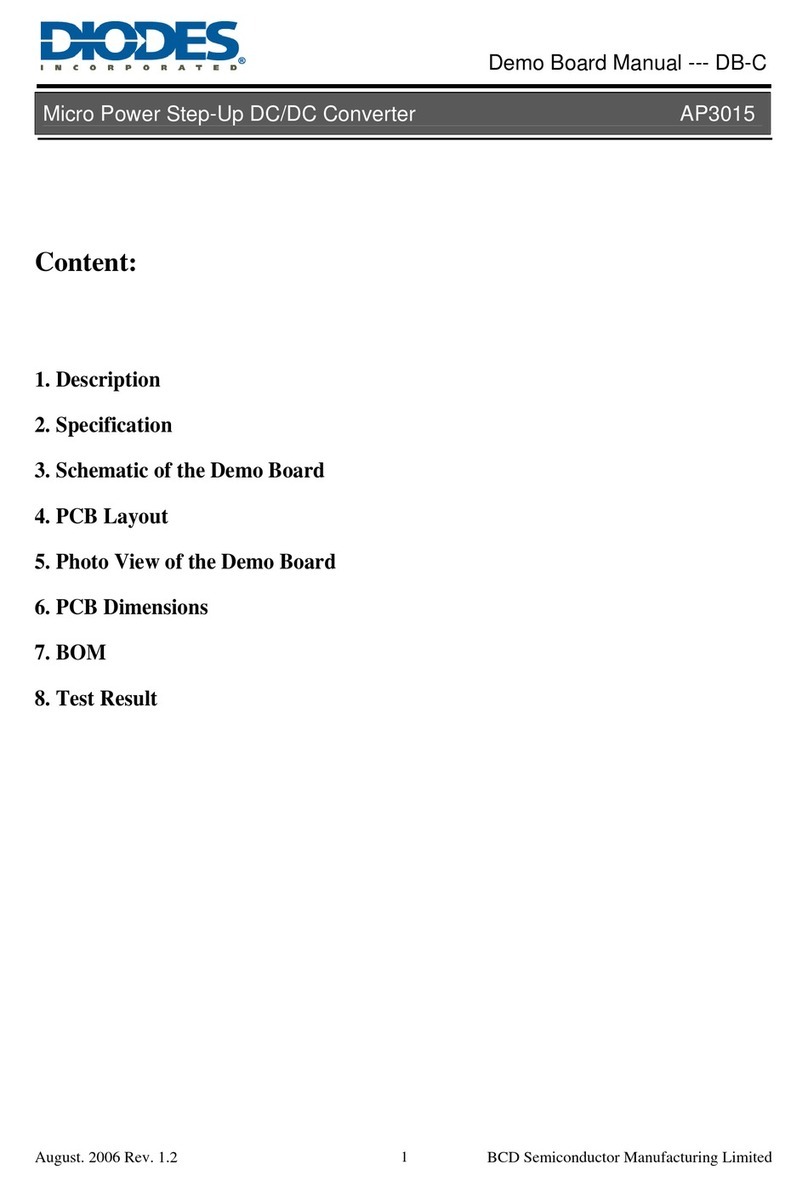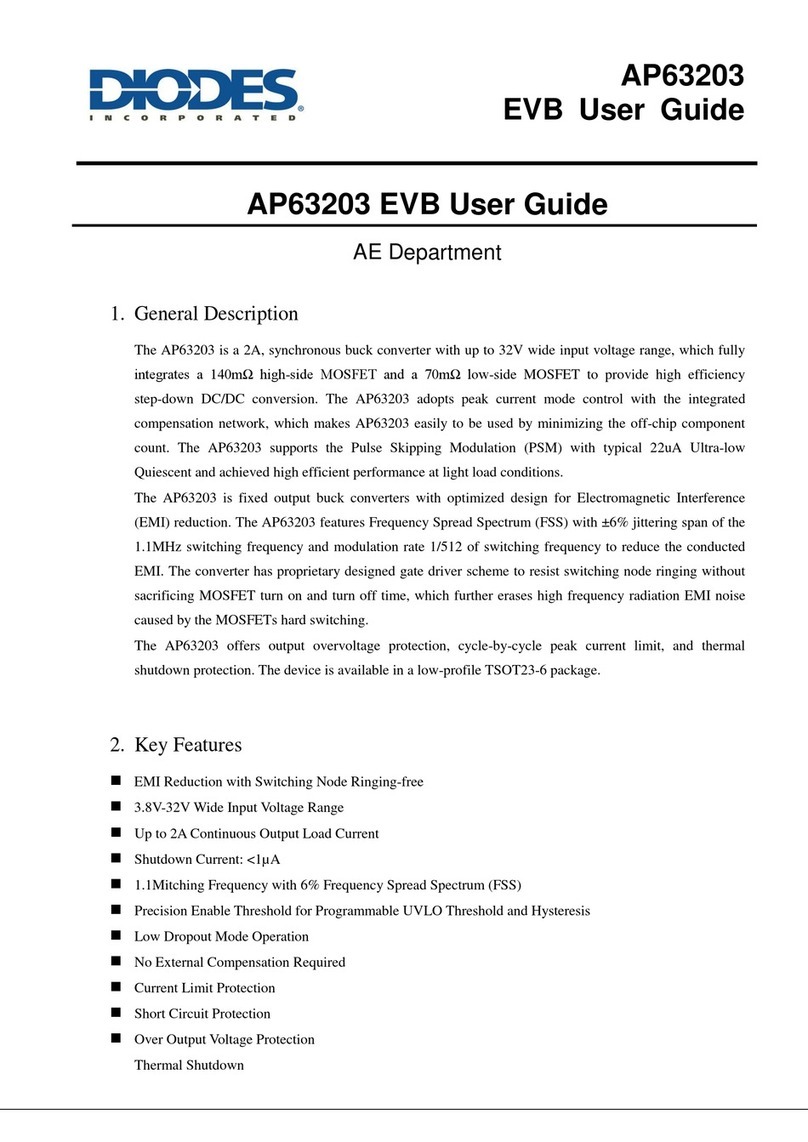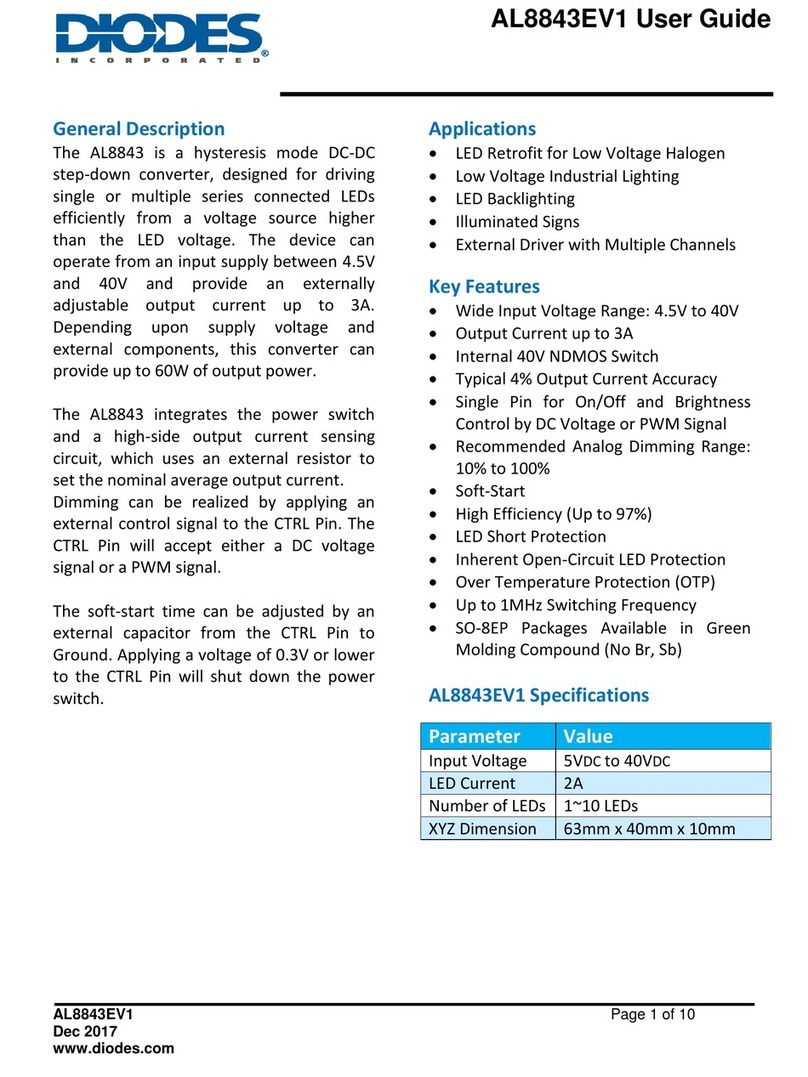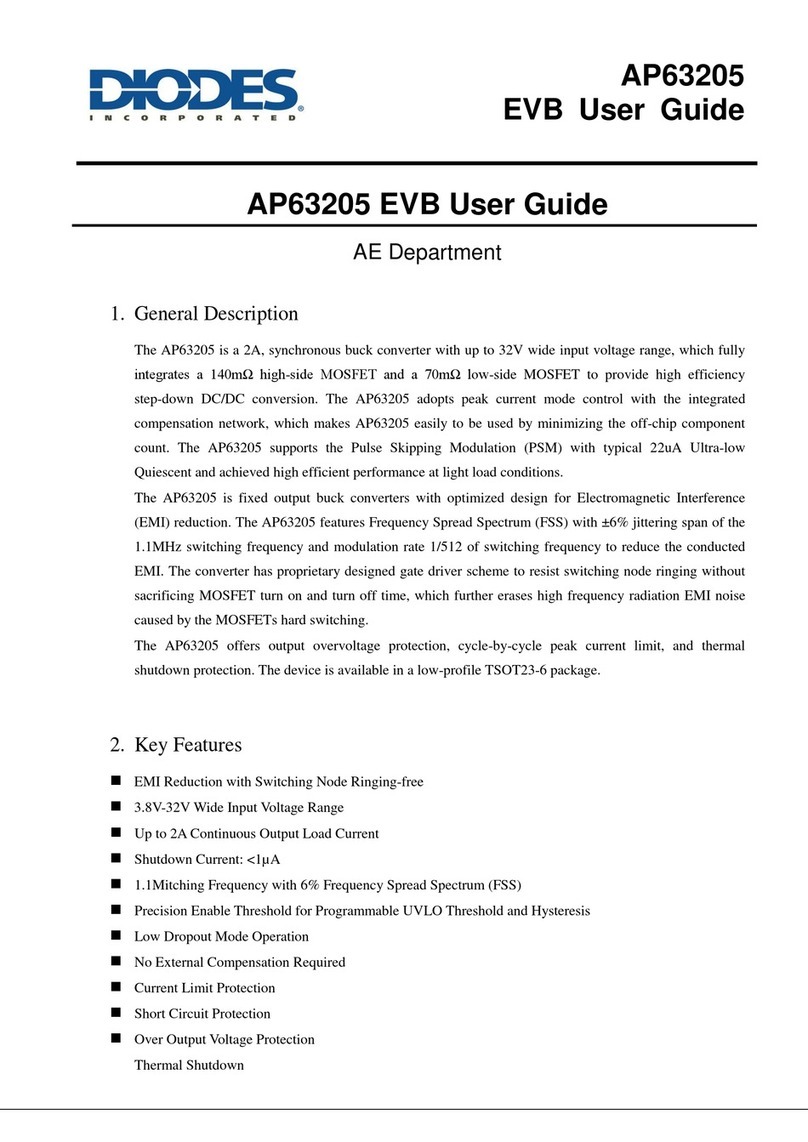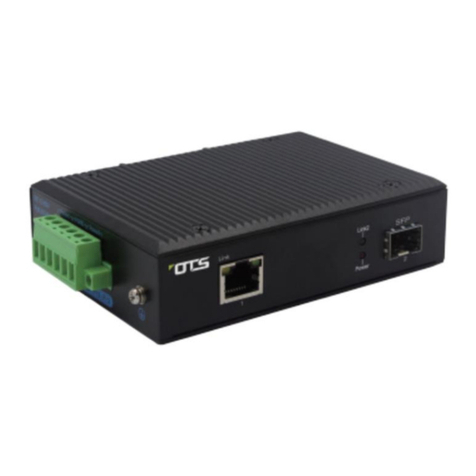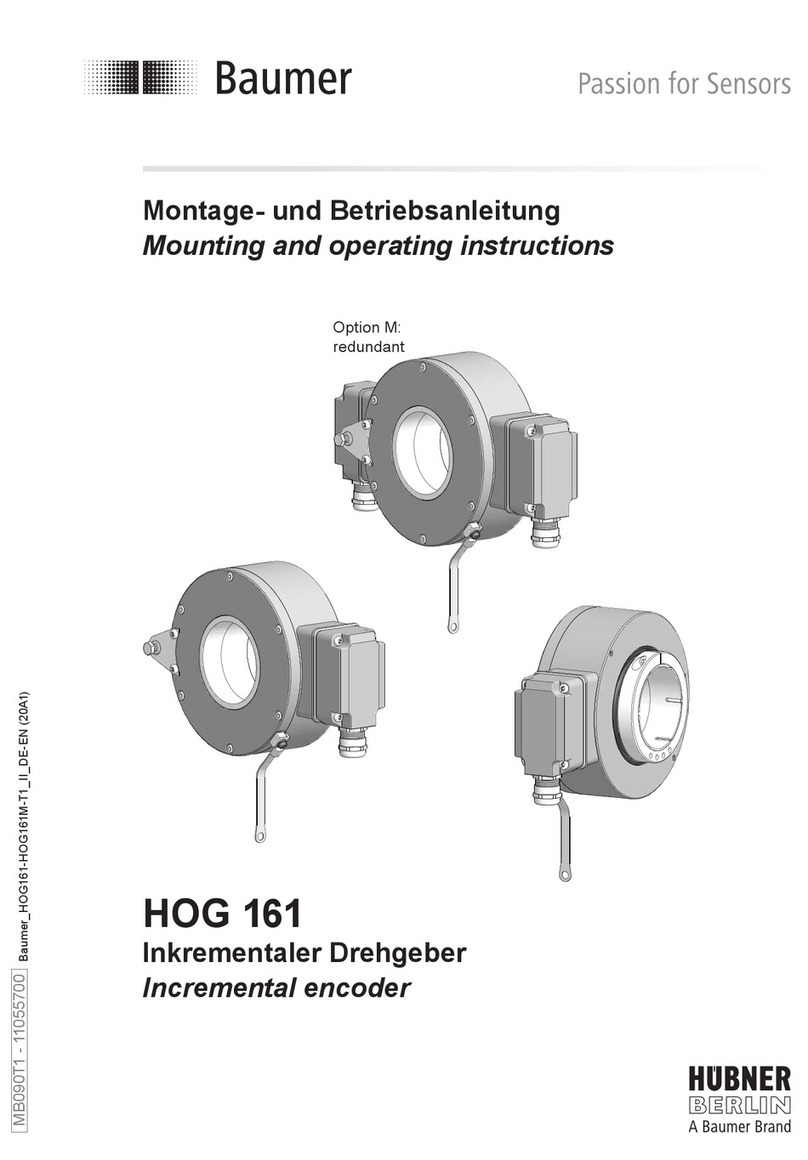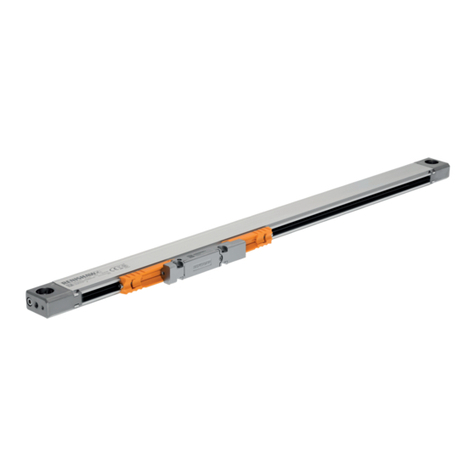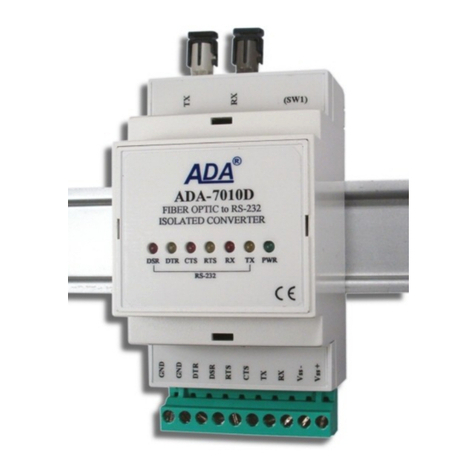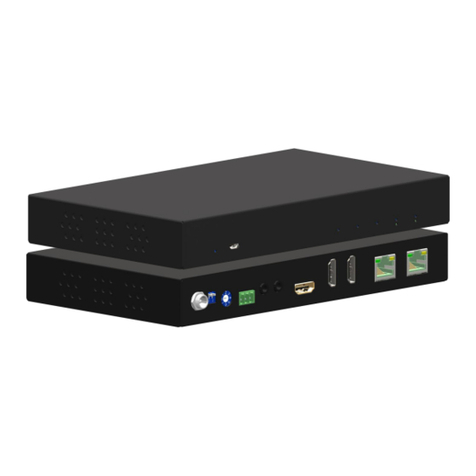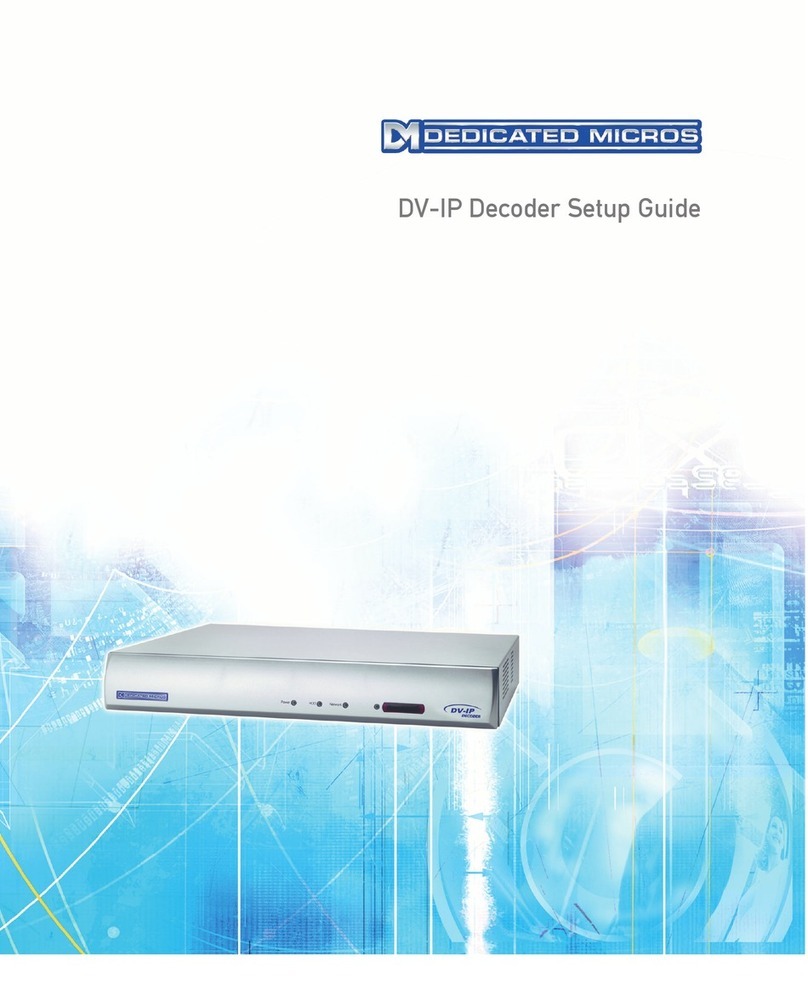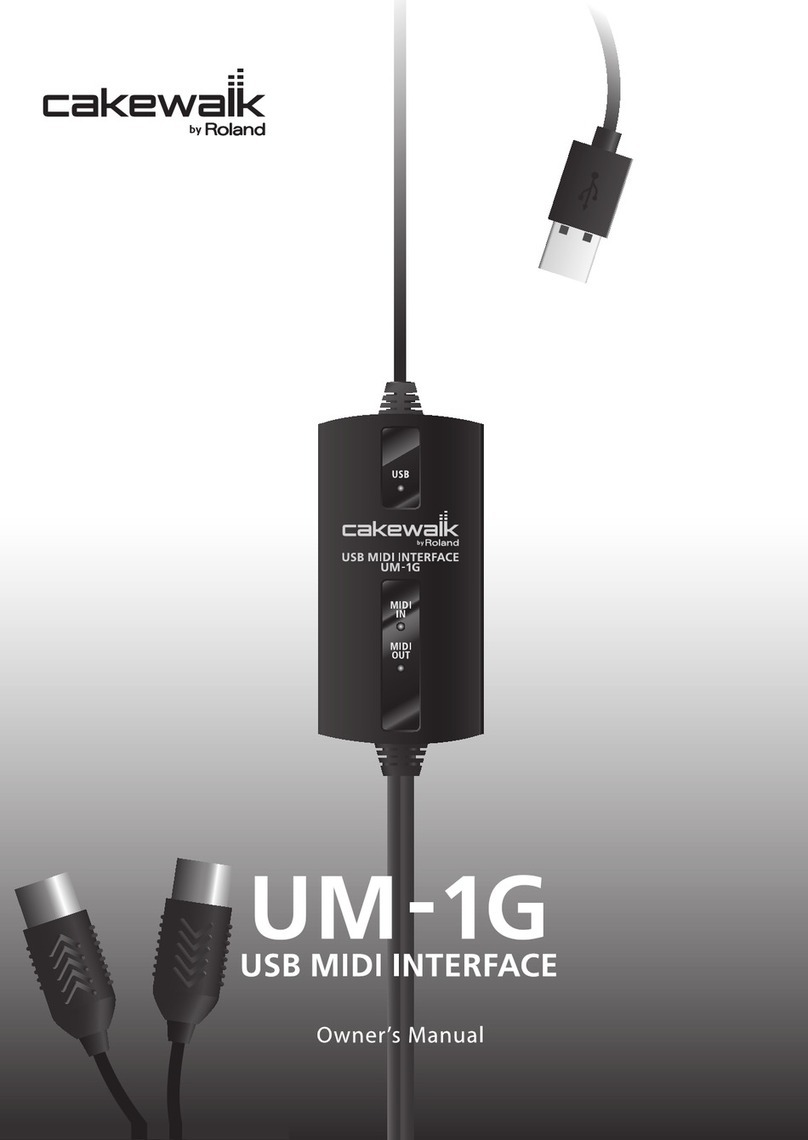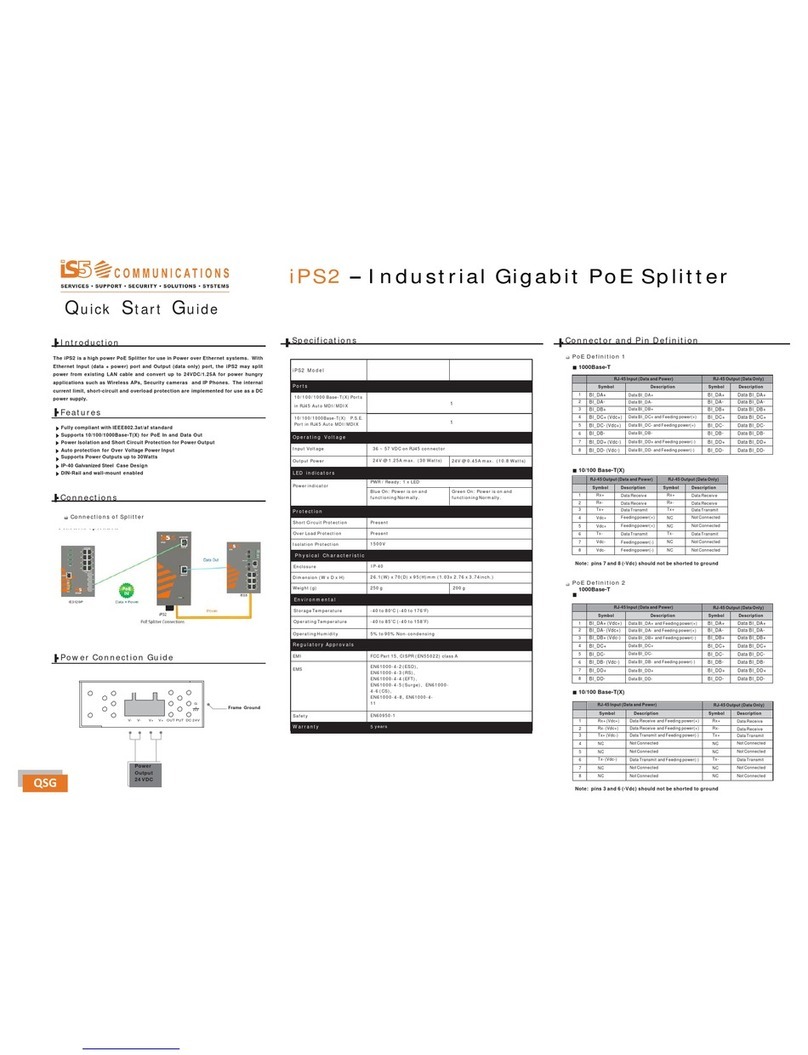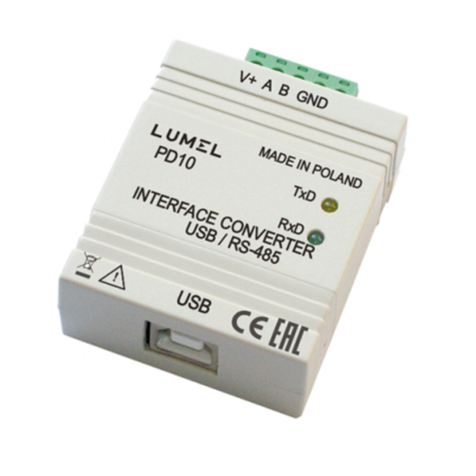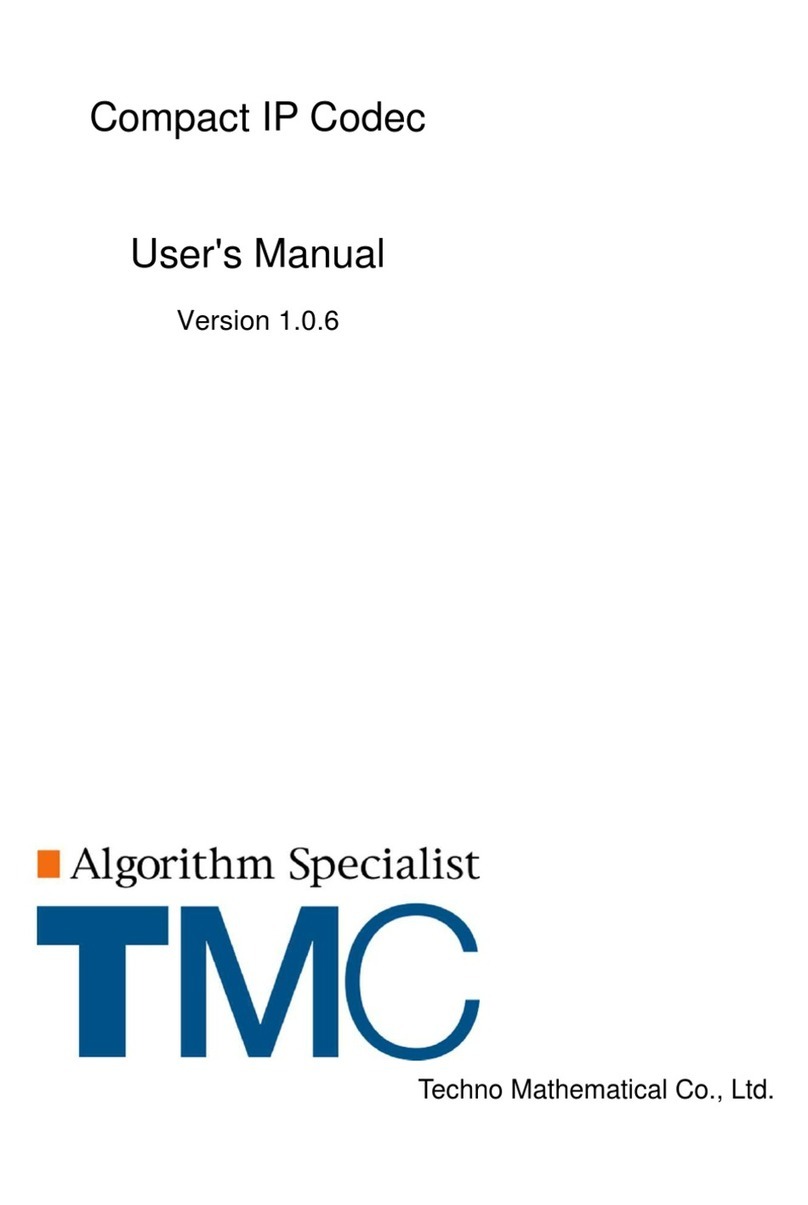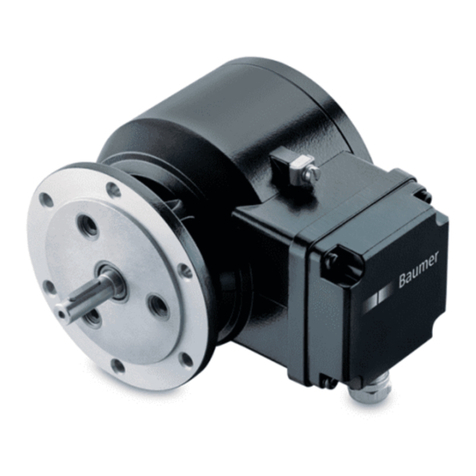Diodes AP63201WU-EVM User manual

AP63201WU-EVM
32V, 2A, Synchronous DC/DC Buck Converter
With Enhanced EMI Reduction
AP63201WU-EVM
Document number: Rev. 1 - 0
1 of 8
www.diodes.com
June 2019
© Diodes Incorporated
DESCRIPTION
The AP63201 is a 2A, synchronous buck
converter with a wide input voltage range of
3.8V to 32V and fully integrates a 125mΩ
high-side power MOSFET and a 68mΩ low-
side power MOSFET to provide high-
efficiency step-down DC/DC conversion.
The AP63201 device is easily used by
minimizing the external component count
due to its adoption of peak current mode
control along with its integrated
compensation network.
The AP63201 has optimized designs for
Electromagnetic Interference (EMI)
reduction. The converter features
Frequency Spread Spectrum (FSS) with a
switching frequency jitter of ±6%, which
reduces EMI by not allowing emitted energy
to stay in any one frequency for a significant
period of time. It also has a proprietary gate
driver scheme to resist switching node
ringing without sacrificing MOSFET turn-on
and turn-off times, which further reduces
high-frequency radiated EMI noise caused
by MOSFET switching.
The device is available in a low-profile,
TSOT26 package.
FEATURES
VIN 3.8V to 32V
2A Continuous Output Current
0.8V ± 1% Reference Voltage
22µA Ultralow Quiescent Current
(Pulse Frequency Modulation)
500kHz Switching Frequency
Supports Pulse Width Modulation
(PWM)
Proprietary Gate Driver Design for
Best EMI Reduction
Frequency Spread Spectrum
(FSS) to Reduce EMI
Low-Dropout (LDO) Mode
Precision Enable Threshold to
Adjust UVLO
Protection Circuitry
oUndervoltage Lockout
(UVLO)
oCycle-by-Cycle Peak
Current Limit
oThermal Shutdown

AP63201WU-EVM
32V, 2A, Synchronous DC/DC Buck Converter
With Enhanced EMI Reduction
AP63201WU-EVM
Document number: Rev. 1 - 0
2 of 8
www.diodes.com
June 2019
© Diodes Incorporated
APPLICATIONS
12V and 24V Distributed Power Bus Supplies
Flat Screen TV Sets and Monitors
Power Tools and Laser Printers
White Goods and Small Home Appliances
FPGA, DSP, and ASIC Supplies
Home Audio
Network Systems
Set Top Boxes
Gaming Consoles
Consumer Electronics
FUNCTIONAL BLOCK
Figure 1. Functional Block Diagram
ABSOLUTE MAXIMUM RATINGS
Symbol
Parameter
Rating
Unit
VIN
Supply Voltage
-0.3 to +35.0 (DC)
V
-0.3 to +40.0 (400ms)
VSW
Switch Node Voltage
-1.0 to VIN + 0.3 (DC)
V
-2.5 to VIN + 2.0 (20ns)

AP63201WU-EVM
32V, 2A, Synchronous DC/DC Buck Converter
With Enhanced EMI Reduction
AP63201WU-EVM
Document number: Rev. 1 - 0
3 of 8
www.diodes.com
June 2019
© Diodes Incorporated
VBST
Bootstrap Voltage
VSW - 0.3 to VSW + 6.0
V
VFB
Feedback Voltage
-0.3 to +6.0
V
VEN
Enable/UVLO Voltage
-0.3 to +35.0
V
TST
Storage Temperature
-65 to +150
°C
TJ
Junction Temperature
+150
°C
TL
Lead Temperature
+260
°C
ESD Susceptibility
HBM
Human Body Mode
2000
V
CDM
Charge Device Model
1000
V
RECOMMENDED OPERATING CONDITIONS
Symbol
Parameter
Min
Max
Unit
VIN
Supply Voltage
3.8
32
V
TA
Operating Ambient Temperature Range
-40
+85
°C
TJ
Operating Junction Temperature Range
-40
+125
°C
EVALUATION BOARD
Figure 2. AP63201WU-EVM

AP63201WU-EVM
32V, 2A, Synchronous DC/DC Buck Converter
With Enhanced EMI Reduction
AP63201WU-EVM
Document number: Rev. 1 - 0
4 of 8
www.diodes.com
June 2019
© Diodes Incorporated
QUICK START GUIDE
The AP63201WU-EVM has a simple layout and allows access to the appropriate signals
through test points. To evaluate the performance of the AP63201WU, follow the procedure
below:
1. For evaluation board configured at VOUT=5V, connect a power supply to the input terminals
VIN and GND. Set VIN to 12V.
2. Connect the positive terminal of the electronic load to VOUT and negative terminal to GND.
3. For Enable, place a jumper to “H” position to enable IC. Jump to “L” position to disable IC.
4. The evaluation board should now power up with a 5V output voltage.
5. Check for the proper output voltage of 5V (±1%) at the output terminals VOUT and GND.
Measurement can also be done with a multimeter with the positive and negative leads
between VOUT and GND.
6. Set the load to 2A through the electronic load. Check for the stable operation of the SW
signal on the oscilloscope. Measure the switching frequency.
MEASUREMENT/PERFORMANCE GUIDELINES:
1) When measuring the output voltage ripple, maintain the shortest possible ground lengths
on the oscilloscope probe. Long ground leads can erroneously inject high frequency
noise into the measured ripple.
2) For efficiency measurements, connect an ammeter in series with the input supply to
measure the input current. Connect an electronic load to the output for output current.

AP63201WU-EVM
32V, 2A, Synchronous DC/DC Buck Converter
With Enhanced EMI Reduction
AP63201WU-EVM
Document number: Rev. 1 - 0
5 of 8
www.diodes.com
June 2019
© Diodes Incorporated
SETTING OUTPUT VOLTAGE:
(1) Setting the output voltage
The AP63201WU features external programmable output voltage by using a resistor divider
network R3 and R1 as shown in the typical application circuit. The output voltage is calculated
as below,
1
31
8.0 RRR
VOUT
First, select a value for R1 according to the value recommended in the table 1. Then, R3 is
determined. The output voltage is given by Table 1 for reference. For accurate output voltage,
1% tolerance is required.
VOUT
R3
R1
C4
C6-C8
1.8V
77.5 KΩ
62 KΩ
100pF
22uFx2
2.5V
131 KΩ
62 KΩ
100pF
22uFx2
3.3V
182 KΩ
62 KΩ
100 pF
22uFx2
5V
157 KΩ
30 KΩ
100 pF
22uFx2
12V
249 KΩ
18 KΩ
56 pF
22uFx4
Table 1. Resistor selection for output voltage setting
(2) Output feed-forward capacitor selection
The AP63201WU has the internal integrated loop compensation as shown in the function
block diagram. The compensation network includes an 18k resistor and a 7.6nF capacitor.
Usually, the type II compensation network has a phase margin between 60 and 90 degree.
However, if the output capacitor has ultra-low ESR, the converter results in low phase margin.
To increase the converter phase margin, a feed-forward cap C4 is used to boost the phase
margin at the converter cross-over frequency,
C
f
. The feed-forward capacitor is given by
Table 1 for reference. The feed-forward capacitor is calculated as below,
3
42
1
R
CfC
Table 2 shows a list of recommended inductors for common output voltages.
VOUT
1.8V
2.5V
3.3V
5.0V
12V
Inductor
3.3µH
3.3µH
6.8µH
10µH
15µH
Wurth Part
744 393 440 33
744 393 440 33
744 393 460 68
744 393 461 00
744 770 915 0
Table 2. Recommended Inductors

AP63201WU-EVM
32V, 2A, Synchronous DC/DC Buck Converter
With Enhanced EMI Reduction
AP63201WU-EVM
Document number: Rev. 1 - 0
6 of 8
www.diodes.com
June 2019
© Diodes Incorporated
EVALUATION BOARD SCHEMATIC
R3
VIN
BS
LX
FB
L1
C1~3
GND
C6~8
VOUT
AP63201
C4
C5
EN
R1
VIN
R2
R5
R6
R4
H
EN
L
Figure 3. AP63201WU-EVM Schematic
BILL OF MATERIALS for AP63201WU-EVM (VOUT=5V)
Item
Value
Type
Rating
Description
Description
C2
10uF
X5R/X7R,
Ceramic/1206
35V
Input CAP
C3
0.1uF
X5R/X7R,
Ceramic/0603
50V
Input CAP
Würth PART
885 012 206 095
C4
100pF
0603
100V
Feedback CAP
Würth PART
885 012 206 102
C5
0.1uF
X5R/X7R,
Ceramic/0603
50V
Bootstrap CAP
Würth PART
885 012 206 095
C6 & C7
22uF
X5R/X7R,
Ceramic/1206
25V
Output CAP
L1
10uH
6060
5.0A
Inductor
Würth PART
744 393 461 00
R1
30K
0603
1%
Voltage set RES*
R3
157K
0603
1%
R4
0
0603
1%
Bootstrap RES
U1
AP63201WU
TSOT26
Diodes Inc
*Note: The present value of R3/R1 are based on Vout=5V

AP63201WU-EVM
32V, 2A, Synchronous DC/DC Buck Converter
With Enhanced EMI Reduction
AP63201WU-EVM
Document number: Rev. 1 - 0
7 of 8
www.diodes.com
June 2019
© Diodes Incorporated
TYPICAL PERFORMANCE CHARACTERISTICS
Figure 4. Efficiency for VIN=12V, VOUT= 5.0V
500 1000 1500 2000
0
10
20
30
40
50
60
70
80
90
100
Efficiency(%)
Input Current(mA)
Vin=12V Vo=5V
Figure 5. Output Ripple for VIN=12V, VOUT=5.0V, IOUT=2A
VSW (10V/div)
IL (1A/div)
VOUT_AC (20mV/div)
5µS/div

AP63201WU-EVM
32V, 2A, Synchronous DC/DC Buck Converter
With Enhanced EMI Reduction
AP63201WU-EVM
Document number: Rev. 1 - 0
8 of 8
www.diodes.com
June 2019
© Diodes Incorporated
IMPORTANT NOTICE
DIODES INCORPORATED MAKES NO WARRANTY OF ANY KIND, EXPRESS OR IMPLIED, WITH REGARDS TO THIS
DOCUMENT, INCLUDING, BUT NOT LIMITED TO, THE IMPLIED WARRANTIES OF MERCHANTABILITY AND FITNESS FOR A
PARTICULAR PURPOSE (AND THEIR EQUIVALENTS UNDER THE LAWS OF ANY JURISDICTION).
Diodes Incorporated and its subsidiaries reserve the right to make modifications, enhancements, improvements, corrections or other
changes without further notice to this document and any product described herein. Diodes Incorporated does not assume any
liability arising out of the application or use of this document or any product described herein; neither does Diodes Incorporated
convey any license under its patent or trademark rights, nor the rights of others. Any Customer or user of this document or products
described herein in such applications shall assume all risks of such use and will agree to hold Diodes Incorporated and all the
companies whose products are represented on Diodes Incorporated website, harmless against all damages.
Diodes Incorporated does not warrant or accept any liability whatsoever in respect of any products purchased through unauthorized
sales channel.
Should Customers purchase or use Diodes Incorporated products for any unintended or unauthorized application, Customers shall
indemnify and hold Diodes Incorporated and its representatives harmless against all claims, damages, expenses, and attorney fees
arising out of, directly or indirectly, any claim of personal injury or death associated with such unintended or unauthorized
application.
Products described herein may be covered by one or more United States, international or foreign patents pending. Product names
and markings noted herein may also be covered by one or more United States, international or foreign trademarks.
This document is written in English but may be translated into multiple languages for reference. Only the English version of this
document is the final and determinative format released by Diodes Incorporated.
LIFE SUPPORT
Diodes Incorporated products are specifically not authorized for use as critical components in life support devices or systems
without the express written approval of the Chief Executive Officer of Diodes Incorporated. As used herein:
A. Life support devices or systems are devices or systems which:
1. are intended to implant into the body, or
2. support or sustain life and whose failure to perform when properly used in accordance with instructions for use provided
in the labeling can be reasonably expected to result in significant injury to the user.
B. A critical component is any component in a life support device or system whose failure to perform can be reasonably expected
to cause the failure of the life support device or to affect its safety or effectiveness.
Customers represent that they have all necessary expertise in the safety and regulatory ramifications of their life support devices or
systems, and acknowledge and agree that they are solely responsible for all legal, regulatory and safety-related requirements
concerning their products and any use of Diodes Incorporated products in such safety-critical, life support devices or systems,
notwithstanding any devices- or systems-related information or support that may be provided by Diodes Incorporated. Further,
Customers must fully indemnify Diodes Incorporated and its representatives against any damages arising out of the use of Diodes
Incorporated products in such safety-critical, life support devices or systems.
Copyright © 2019, Diodes Incorporated
www.diodes.com
Table of contents
Other Diodes Media Converter manuals

